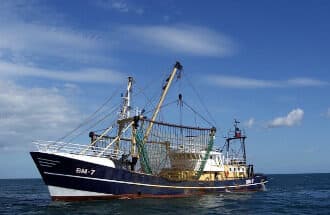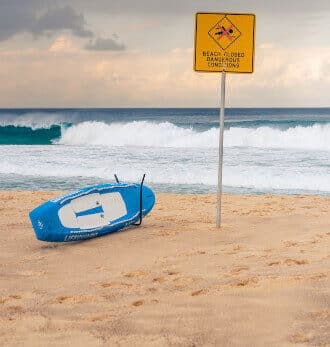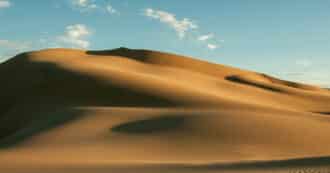By Harry Cooper – Climate change and other human activities have had numerous impacts on the natural ecosystems of our world. While many species have struggled to adapt to these rapidly changing environments, others have taken advantage of the new conditions.
Human changes to the environment have been particularly favorable to the various species of sea jellies, such as moon jellies, comb jellies, box jellies, and upside down jellyfish. While increasing ocean temperatures, rising salinity, and lower oxygen levels caused by human activity have forced some species to struggle to survive, jellyfish actually prefer these environments and are able to thrive in record numbers around the world.
While this may be good for jellyfish, rising jellyfish populations should not be interpreted as an unexpected boon to environmental degradation. This rapid increase in jellyfish numbers is having serious consequences for both ocean ecosystems and human industries.
These jellyfish blooms have been known to clog infrastructural pipes and disrupt local ecosystems. And as human activity continues to impact our oceans, we can expect to see more and more places across the world with jellyfish problems on their hands.
How Human Impacts Are Affecting Jellyfish Populations
Humans have impacted the Earth’s oceans in a variety of ways. Most of the time these impacts negatively affect communities of marine species. However, it is important to understand the ways in which these changing conditions are beneficial to jellyfish.
This is due to the nature of their lifecycle and simple body plans. Jellyfish are very simple organisms that are incredibly adaptable to different environments and conditions; one species of jellyfish has even managed to live forever. Others for a million years! As jellyfish are so capable of adapting in these new environments, while their competitors and predators fall behind, jelly populations around the world are thriving.
Warmer Oceans
As climate change and increasing greenhouse gases trap more and more heat in the Earth’s atmosphere, areas across the world are seeing record high temperatures and climates, including the ocean. It is estimated that the surface layer of the ocean has risen about 1.5°F since 1901.
While this might not seem like a lot, it’s enough to make survival incredibly difficult for the majority of marine life. However, this is not the case for jellyfish.
Jellies reproduce at an already incredibly fast rate. It is estimated that one female jellyfish can lay up to 45,000 eggs a day!
But with rising temperatures jellyfish incubation times are shortening, allowing jelly eggs to hatch much faster. On top of that, with oceans being warmer for longer during the year, some jellyfish are even capable of reproducing multiple times in a season, causing a population explosion.
Lower Oxygen Levels
Inland agricultural activity has impacts on the ocean and coastal environments hundreds of miles away. Industrial farms often use harmful chemical fertilizers that run off into rivers and eventually into the ocean.
When these fertilizers get into coastal ecosystems they trigger harmful algal blooms that deplete the water of oxygen. These coastal areas with depleted oxygen are called dead zones, as little to nothing can survive in them.
However, these dead zones are actually ideal environments for jellyfish. Having no blood or complex organs jellyfish require very little oxygen to survive, and with other competition and predators out of the way, jellies are able to thrive.
The algal blooms bring large amounts of plankton with them. This leaves a large amount of food for the jellies with very little competition to interfere.
On top of that, once jelly populations explode, they also prey on fish eggs and baby fish. This makes it harder for the ecosystem to bounce back.
Overfishing of Other Species
Another human impact that has favored jellyfish populations is overfishing. This eliminates species that would otherwise compete with jellyfish for food, or prey on them to keep their populations in check.
Commercial fish such as herring, anchovies, and sardines typically eat zooplankton, the jellyfish’s main food source. When overfishing largely removes these fish from marine ecosystems, jellyfish no longer have to compete for food, and flourish.
On top of that, larger commercial fish such as bluefin tuna and sea turtles, which capture prey and eat jellyfish, now get caught in fishing nets and their population numbers are dwindling. These species would normally keep jellyfish populations down, but with them removed from the ecosystem as well, jellyfish numbers are able to skyrocket even higher.
Consequences of Increasing Jellyfish
Infrastructural Impacts
Jellyfish have been known to get stuck in seawater intake valves. Various kinds of industrial processes rely on these intake valves for a constant supply of seawater.
These clogs create all kinds of problems. Desalination plants have been rendered unable to produce fresh water, power plants can be completely shut down and they can even cause emergency situations at nuclear plants.
Impacts On The Fishing Industry
The fishing industry is in part responsible for the overpopulation of jellyfish. However jellyfish blooms also have negative impacts on the fishing industry itself.
Jellyfish can completely take over fishing stocks and greatly reduce the number of commercial fish in an area. These gelatinous animals can also clog up fishing nets, this can taint the fish stock, prevent fishermen from catching fish, and even capsize fishing boats when nets become too clogged to haul in.
Jellyfish blooms have caused damage to fishing industries all over the world. It is estimated that the annual damage caused by jellyfish blooms to the fishing industry is around 70-200 million dollars.
Decreased Tourism
Many coastal cities around the world rely on beach tourism for their economy. But when coastal waters become filled with jellyfish and their stinging tentacles, beach tourism is not as viable.
The stinging cells of jelly stings contain varying kinds of potency, some causing discomfort and pain while others can lead to death. With more and more jellyfish blooms occurring around the world, many beaches have had to close due to an increase in jellyfish stings.
Beaches closed due to jelly stings can have a considerable impact on an areas economy. Many coastal areas rely on a short season of tourist activity, and if beaches are closed during that time businesses can lose out on a lot of money.
Examples of Jellyfish Blooms
Sea Nettles in Chesapeake Bay
Sea nettles are a specific type of jellyfish found across the world. Species of sea nettles such as the comb jelly and the moon jelly naturally occur in Chesapeake Bay during their seasonal reproductive cycle, but human changes to the Chesapeake ecosystem has caused them to appear for longer and in greater numbers.
This is due to agricultural runoff from inland farms, and an increase in the water temperature of the bay. This has caused the yearly natural appearance of sea nettles to become an explosive jellyfish bloom.
This bloom has closed down beaches and prevented fishermen from catching crab and fish. As these human caused conditions worsen, we have began to see these blooms occurring all over the eastern seaboard.
Nomura’s Jellyfish in Japan
The Nomura’s jellyfish is a massive human sized jellyfish that is found in the pacific ocean near Japan. Normally blooms of the Nomura would occur every forty years in a natural cycle, but human interference has changed this.
In recent years blooms of Nomura’s jellyfish have been occurring annually. Japan blames this on agricultural nutrient run off from China creating favorable conditions for the jellyfish.
The Nomura’s jellyfish have caused especially bad problems for Japan. This is mainly due to the massive size of the jellies, and their unusually painful sting.
These jellies have clogged intake valves causing power outages, and have devastated fish population for both fishermen and local ecosystems. They were even responsible for capsizing a fishing trawler.
The Japanese government has been at a loss for how to deal with these massive jellies. It seems the only way we can stop these jellyfish blooms is by working together to solve the global environmental issues in our world such as nutrient pollution and climate change.
Jellyfish And Religion
Beatrice Marovich writes for Religion Dispatches her own commentary on an article that was published in the New York Times about how Japanese researcher Shin Kubota is studying a jellyfish species to learn the secret of immortality. Maravich describes the jelly, Turritopsis dohrnii, aka, the “immortal jellyfish.” This Jelly species, according to Maravich, is “able to—crudely speaking—reverse the aging process, returning to its earliest stage of development, and Kubota is the man who watches them do this. Tirelessly. His research (conducted through Kyoto University’s Seto Marine Biological Laboratory) is designed to observe their death-defeating transition over and over again.”
But Maravich is not comfortable with this. He worries that were humans to figure out the secret of these jellyfish, they would exploit it. Kubota is also concerned and tells his interviewer that we’re currently too violent to unlock the secret of these jellyfish. “If everyone learns to love living organisms, there will be no crime. No murder. No suicide. Spiritual change is needed,” says Kubota. But in the meantime, humans exploit living organisms. So what will happen if we learn the secrets of immortality? We’ll be able to live and exploit forever.
We all die some day. Except for these jellyfish, it seems. And perhaps that’s a good thing. Life has an expiration date. And after that, we don’t know what happens. Sure, we all have our theories, but all we know is that someday we’ll leave this world behind. While we’re here, we have the opportunity to make the world a little better than when we arrived. If we lived forever, we might feel we have forever. We might exploit forever, and leave off giving back until a tomorrow that may never come.
These immortal jellyfish can perhaps teach us the secret of mortality. But even more important, in my opinion, they can remind us to recognize our own mortality. We were sent into this world for a purpose. It’s up to us to figure out what that purpose is and to leave the world a better place for having pursued our purpose to the end. We don’t have forever.
* Featured image source






